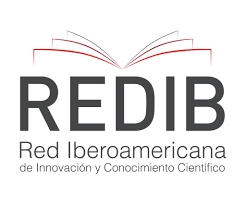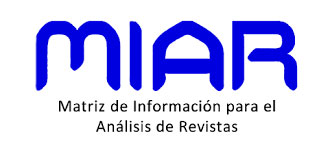Reflection for a social renewal: beauty and women
DOI:
https://doi.org/10.51743/cpe.167Keywords:
beauty, educator, wife, maternity, womenAbstract
This reflection proposes the Via pulchritudinis as an educational alternative for the reconstruction of a post-Covid society. The concept of "the beautiful" can awaken in the human person the goodness, beauty and truth within them, as made in the image and likeness of the Creator. Women are especially sensitive to beauty and, in its highest moral meaning, beauty can be a valid means of "humanization" and social transformation. Women play an important role in this matter. However, it is necessary to bear in mind the dual anthropological understanding of the feminine that takes into account not only the elements common to the human being but, above all, what is specific in it as “being female”. If a person's beauty is linked to their interiority, then what characteristics make a woman particularly beautiful? Taking Mary as a reference and as icon of beauty for women and for the Church, the elements that make up her beauty are her prophetic aspect, her natural and spiritual motherhood, and her nuptiality.
Downloads
Global Statistics ℹ️
|
550
Views
|
391
Downloads
|
|
941
Total
|
|
References
Ales Bello, A. (2021). Maternidad y paternidad desde la perspectiva de la antropología dual de
Edith Stein. En L. Redondo Redondo (Coord.) y Gallardo S. (Ed.). Mujer y mujeres. Su
esencia y su existencia en la historia. vol. 1: La mujer. Ser y tarea (pp. 129-146). Universidad
Católica de Ávila.
Álvarez Alonso, F. (2013). Alla verità per la via della bellezza. En Cuadernos de Pensamiento, 26,
-199.
Álvarez Alonso, F. (2021). La Iglesia es mujer. En L. Redondo Redondo (Coord.) y S. Gallardo (Ed.). Mujer y mujeres. Su esencia y su existencia en la historia. vol. 1: La mujer. Ser y tarea (pp. 199-230). Universidad Católica de Ávila.
Balthasar, H.U. von (1985). Gloria. La percepción de la forma. Encuentro. Bergoglio, J. M. (2014).
La bellezza educherà il mondo. Emi.
Catecismo de la Iglesia Católica (Cathechismus Catholicae Ecclessiae, 15-VIII- 1997).
Francisco (25 de marzo de 2021). Carta Apostólica ‘Candor Lucis Aeternae’ en el VII centenario de la muerte de Dante Alighieri.
https://press.vatican.va/content/salastampa/it/bollettino/pubblico/2021/03/25/0181/00393.html#spa
Francisco (25 de septiembre de 2020). Video-mensaje con motivo del 75 período de sesiones de la Asamblea General de las Naciones Unidas. http://www.vatican.va/content/francesco/es/messages/pont-
messages/2020/documents/papa-francesco_20200925_videomessaggio- onu.html
Francisco (24 de noviembre de 2013). Exhortación Apostólica Evangelii gaudium.
http://www.vatican.va/content/francesco/es/apost_exhortations/documents/papa-
francesco_esortazione-ap_20131124_evangelii-gaudium.html Hildebrand, D. von (2006). Estetica, Bompiani.
Juan Pablo II (4 de abril de 1999). Carta a los artistas.
Juan Pablo II (15 de agosto de 1988). Mulieris dignitatem. http://www.vatican.va/content/john-paul-ii/it/apost_letters/1988/documents/hf_jpii_apl_19880815_mulieris-dignitatem.html
Morales, T. (2011). Forja de hombres. Biblioteca de Autores Cristianos Pablo VI (8 de diciembre de 1965). Mensaje del Concilio a las mujeres.
http://www.vatican.va/content/paul-vi/es/speeches/1965/documents/hf_p-
vi_spe_19651208_epilogo-concilio-donne.html Pablo VI (8 de diciembre de 1965). Mensaje a los
Pontificio Consejo de la Cultura (2008). ‘Via Pulchritudinis’. Camino de evangeli- zación y de
diálogo. BAC Documentos.
Prats Mora, J.I. y Prats Arolas, G. (2021). La mujer como don. En L. Redondo Redondo (Coord.) y Gallardo S. (Ed.). Mujer y mujeres. Su esencia y su existe cia en la historia. vol. 1: La mujer.
Ser y tarea (pp. 57-78). Universidad Católica de Ávila.
Redondo Redondo, L. (Coord.) y Gallardo S. (Ed.) (2021). Mujer y mujeres. Su esencia y
su existencia en la historia. vol. 1: La mujer. Ser y tarea. Universidad Católica de Ávila.
Rouco Varela, A.M. (2008). La belleza frente a la ideología laicista. En Pontificio Consejo de la
Cultura. ‘Via Pulchritudinis’. Camino de evangelización y de diálogo (pp. 103-111). BAC Documentos.
San Agustín (s.f.). Sermones. 241, 2.
https://www.augustinus.it/spagnolo/discorsi/discorso_337_testo.htm
Schiller, F. (2019). Cartas sobre la educación estética del hombre. Universidad Nacional
de Cuyo. https://bdigital.uncu.edu.ar/objetos_digitales/11708/zubiria-cartasesteticas-
revision2019.pdf
Sedlmayr, H. (1959). El arte descentrado: las artes plásticas de los siglos XIX y XX como síntoma y símbolos de la época, Labor.
Soloviev, V. (1983). Il significato universale dell’arte. En V. Soloviev. Il significato dell’amore
e altri scritti. La Casa di Matriona.
Stein, E. (1968, 2012⁶). La donna. Città Nuova.
Tanzella-Niti, G. y Strumia, A. (edd.) (2002). Bellezza. En Dizionario
Interdisciplinare di Scienza e Fede, vol. I, Urbaniana University Press-Città Nuova (1° ed., pp.
-181). Tomás de Aquino (s.f.), Summa Theologiae, I, q.5, a.4.
Downloads
Published
How to Cite
Issue
Section
License
The author reserves the rights (copyright) of the published works, and the journal encourages and allows their reuse, from the preprint. The works are published in the electronic edition of the journal under a license "Creative Commons Attribution / Attribution-NonCommercial 4.0 International Public License - CC BY-NC 4.0", and can be copied, used, disseminated, transmitted and publicly exhibited.
The author / s partially transfer the property rights (copyright) of this work for the printed and online editions, provided that:
- The authorship and original source of its publication (magazine, publisher and URL of the work) is cited.
- Are not used for commercial purposes.
- The existence and specifications of this user license are mentioned.
It also declares to have respected the ethical principles of research and to be free from any conflict of interest.
"C.P.E." encourages the authors and the scientific community to the maximum promotion and dissemination of the works in their final version through:
1) Your list of contacts (emails) and social networks (Facebook, Twitter, LinkedIn ...).
2) Institutional repository of your University and public repositories (Mendeley, Cosis ...).
3) Scientific social networks (ResearchGate, Academia.edu, Kudos ...).
4) Personal or institutional website, blog, etc.
5) Google Scholar, ORCID, ResearchID, ScopusID, Dimensions, PlumX ...
6) Printed copies purchased directly and sent to specialists for reading and subsequent citation if appropriate.




















1.png)
1.png)

1.png)





.png)
.png)

.png)
1.png)
1.png)
